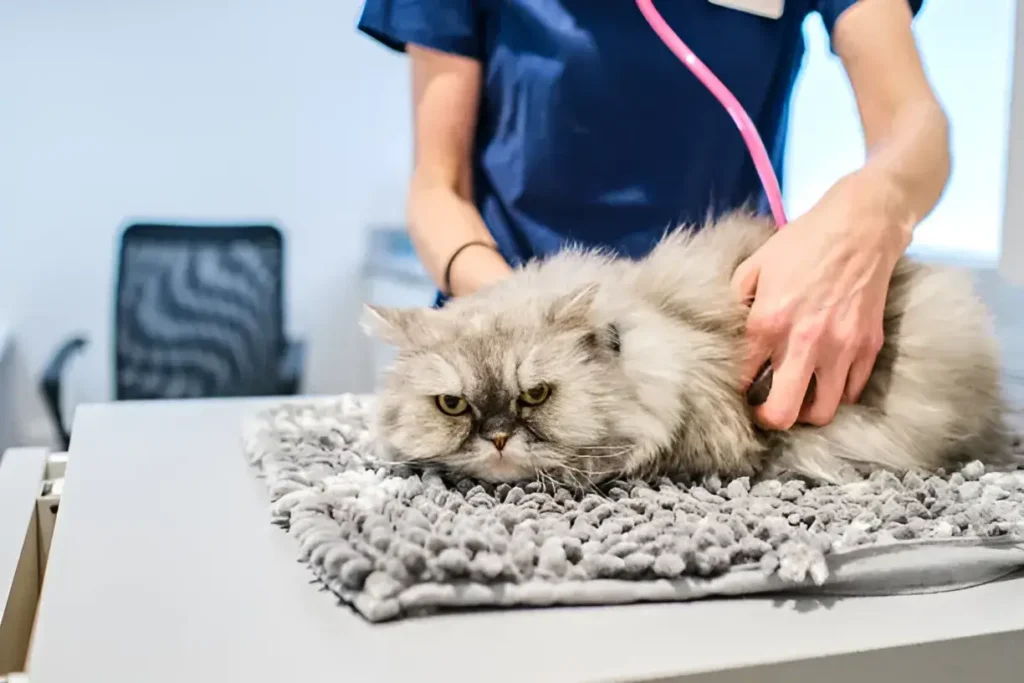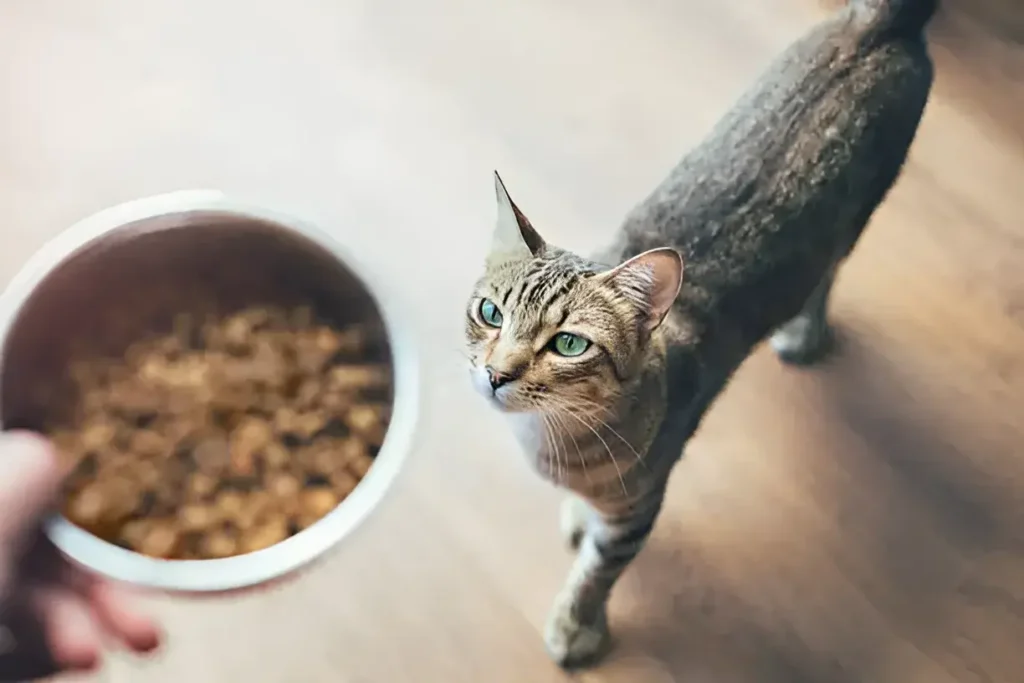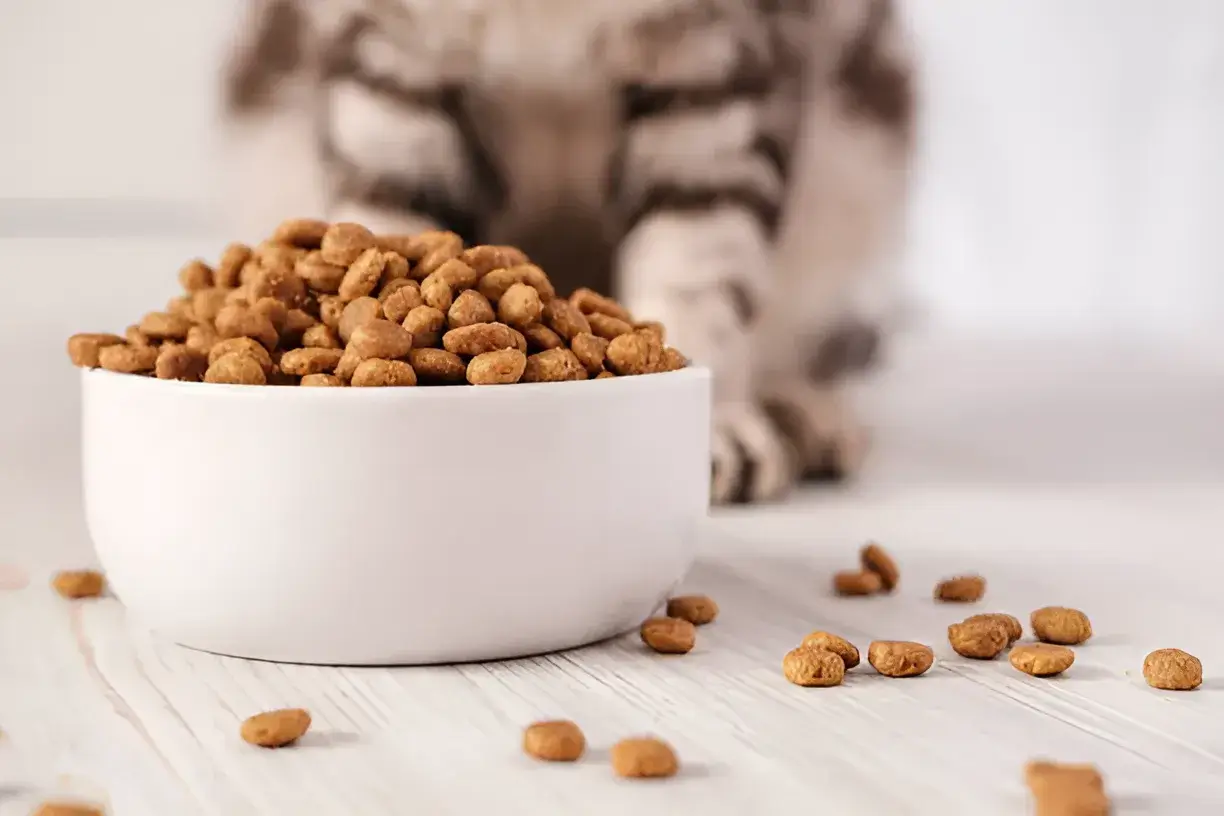Is your feline friend suddenly turning their nose up at their usual bowl of kibble? Refusal to eat hard food can be concerning for cat owners. While it might be simple pickiness, it could also signal dental problems, medical issues, or stress. Let’s dive into the potential reasons behind this change in eating habits and provide solutions to get your kitty crunching again.
Is It Tooth Trouble?
1. Dental Distress: Cats can be experts at hiding pain, but dental problems are a leading cause of hard food refusal. Look for these signs:
- Bad breath
- Red, swollen gums
- Drooling
- Pawing at the mouth
- Difficulty chewing
2. Home Dental Check: Carefully observe your cat’s mouth. Look for signs of trouble like fractured teeth, discolored buildup on the teeth (especially near the gums), or gums that appear unusually red or swollen. If you’re hesitant to check inside the mouth, gently run your finger along the outside of your cat’s gums to feel for any lumps or sensitive areas. If you spot anything concerning, schedule a vet appointment promptly for a comprehensive dental exam. Remember, keeping your cat’s teeth and gums healthy is essential for their overall well-being.
3. Vet Visit Required: If you see any concerning signs, book a vet appointment immediately. Don’t attempt to treat dental issues at home.
Medical Concerns or Simply Picky?

1. Health Check: Sometimes, a decreased appetite for hard food indicates an underlying illness. Watch for additional symptoms like:
- Vomiting
- Diarrhea
- Lethargy
- Changes in thirst or urination
2. Common Ailments: Kidney disease, digestive problems, infections, and more can dampen a cat’s appetite, especially for dry food.
3. When to See the Vet: If any additional symptoms are present alongside the refusal of dry food, schedule a vet visit promptly.
Dealing with a Finicky Eater
1. Taste Preferences: Cats are creatures of habit and might simply dislike their current food. Consider if you recently changed brands or flavors.
2. Gradual Transitions: When switching foods, do it slowly. Over a week or two, mix increasing amounts of the new kibble into the old.
3. Appealing Enhancements: Try these tricks to make dry food more enticing:
- Try softening the kibble slightly by adding a small amount of warm water.
- Make dry food more tempting by sprinkling it with crushed-up treats or a little tuna juice (drained to avoid excess salt).
- Instead of leaving food out all day, offer multiple smaller meals throughout the day.
4. Consider your cat’s surroundings. Do they have a peaceful spot for eating? Cats are easily stressed by changes or loud noises. Ensure their feeding area is quiet, safe, and familiar.
5. Whisker Fatigue: An Overlooked Factor Whiskers are highly sensitive, and deep or narrow food bowls can cause discomfort. Switch to a shallow, wide dish to see if this encourages your cat to eat more readily.
Additional Considerations

1. The Importance of Hydration: Refusing kibble can reduce a cat’s water intake. Offer multiple freshwater sources around the home, or consider a water fountain to encourage drinking.
2. Wet Food Alternatives: Is It the Solution? Switching to a solely wet food diet, or a combination of wet and dry, might be appealing to some cats. Discuss this option with your veterinarian for a balanced and tailored approach.
3. My Cat Used to Love Hard Food!: Addressing Sudden Changes If your cat’s change in eating is sudden, consider recent events. Has there been stress in the house, a change in their kibble formula, or any indication of a possible underlying medical condition?
4. Creative Solutions for Stubborn Cats Try some unconventional ideas:
- Freezing dry food for a different texture
- Using hard food as a puzzle toy filler
- Flavoring water with low-sodium chicken broth
When a Vet Visit Is Essential
1. Red Flags: Don’t hesitate to seek professional help if you observe:
- Refusal of ALL food, not just hard food
- Weight loss
- Lethargy or significant behavioral changes
2. Time Limit: A cat going 24 hours or more without eating is a cause for serious concern and warrants an urgent vet visit.
Conclusion
Refusing hard food is a common concern for cat owners, but pinpointing the cause is key. Remember, patience is your ally. With observation, gradual changes, and veterinary attention when needed, you’ll help your feline friend rediscover the joy of a satisfying crunch!
The photo featured below the post headline is Credit: Ilionescu Corneliu/Gettyimages
I hope you find this post helpful and informative. If Yes’ feel free to share it with your friends!
Frequently Asked Question
My cat is old. Could age cause hard food refusal?
Yes, senior cats often experience dental problems and decreased appetite, making hard food difficult. Softening food with water or switching to soft options might help.
Could boredom with their food be the issue?
Definitely! Try alternating between a few flavors or brands of hard food to keep things interesting.
Can stress cause my cat to stop eating hard food?
Absolutely. Changes in the household, new pets, or loud noises can throw a cat off their eating routine. Provide a calm environment and safe spaces.
How do I get my cat to eat dry food again?
There are multiple strategies:
1. Start with a gradual transition, mixing in small amounts of the desired dry food with their current food.
2. Make dry food more appealing by adding warm water, a bit of tuna juice, or other toppers.
3. Address any potential underlying dental or health issues with your vet.
My cat seems to favor wet food. Could there be a specific reason?
Several factors could be at play:
1. Dental Issues: Discomfort from sore teeth or gums can make chewing kibble difficult.
2. Taste and Texture: Cats can have strong preferences, and wet food might simply be more appealing to their palate.
3. Health Concerns: Certain medical problems can compromise a cat’s appetite or make eating dry food uncomfortable.
My cat won’t eat dry food but will eat treats. What does that mean?
Treats are usually more palatable than regular kibble, so it highlights a preference issue. Use treats sparingly to avoid nutritional imbalances. Focus on making dry food more appealing or finding alternatives, in consultation with your vet.
My cat suddenly stopped eating dry food. What should I do?
First, monitor for any concerning symptoms like vomiting, lethargy, or changes in litter box habits. If there are none, try making the dry food more appealing or consider a very gradual transition to a new formula. If the behavior persists or worsens, a vet visit is crucial.
My cat absolutely refuses dry food. Is a solely wet food diet a viable option?
While cats can thrive on a carefully chosen wet food diet, it’s wise to consult your veterinarian for the best approach. Dry food offers certain benefits like dental abrasion, and a combined diet might offer optimal balance and variety.
My cat throws up after eating dry food. Could that be related?
Absolutely. Vomiting after eating can indicate a food sensitivity or allergy, or an underlying digestive issue. A vet evaluation is essential to determine the cause.
Can dry food go bad? Could that make my cat avoid it?
Yes! Dry food can become stale or rancid if stored improperly or past its expiration date. Always check the freshness of your cat’s food, offer it in smaller portions, and store it in an airtight container to maintain palatability.

